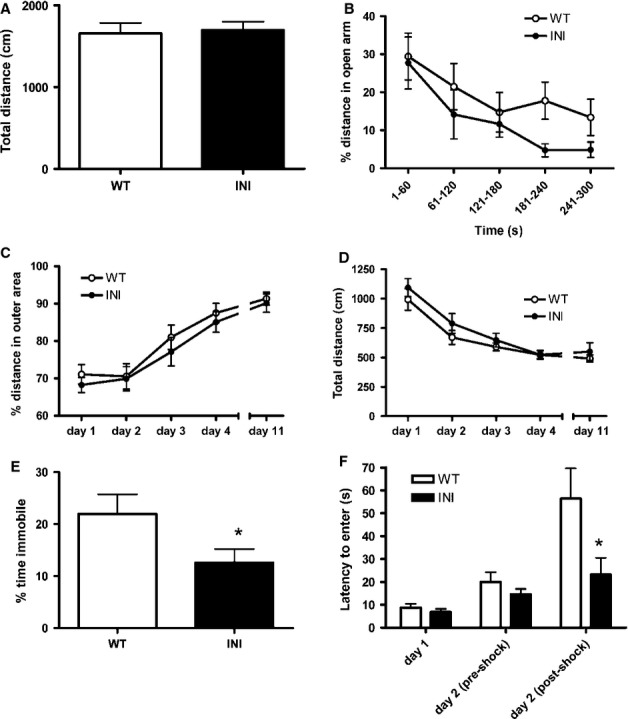Figure 6.

INI mice have an altered mood phenotype. There was no difference in anxiety behaviour between WT (n = 17) and INI (n = 12) male littermates in the EPM. (A) The total distance covered in the maze over the 5 min test period and (B) the percentage distance in the anxiogenic open arm did not significantly differ between genotypes. Animal locomotion was measured in an open field for four consecutive days, then animals were left to rest for 1 week and tested again (n = 14–18). The thigmotaxis (distance travelled in the less anxiogenic outer area) (C) and total distance travelled (D) in the open field did not differ between genotypes. (E) INI mice displayed less learned helplesness in a forced-swim test (n = 16 in each group) (t-test comparison, *P < 0.05). (F) Using a passive avoidance test, INI mice exhibited a reduced latency to enter the dark compartment following a mild electric foot shock on day 2, suggesting a lesser memory of a fearful stimulus (two-way anova followed by Bonferroni testing, *P < 0.05). Values are mean ± SEM.
